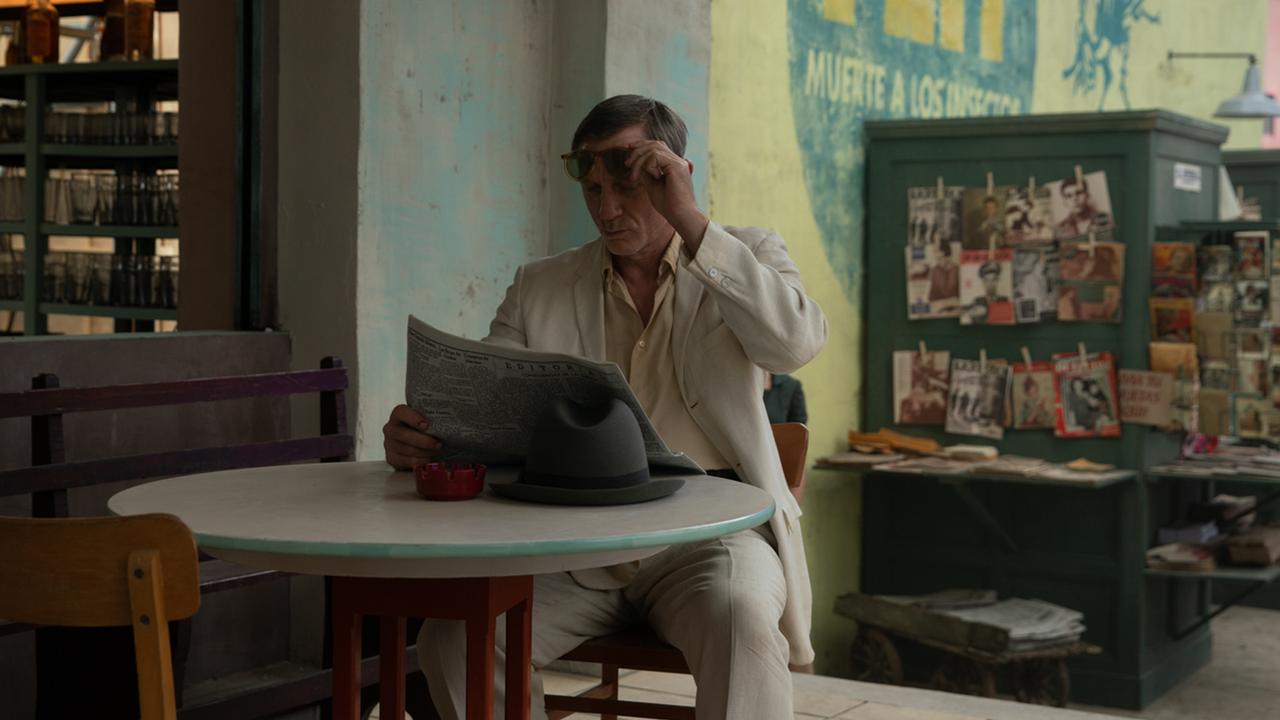Shock, horror
DAVID Walsh's new museum is in a beautiful location, built into the hillside overlooking the broad reaches of the Derwent River in Hobart.
DAVID Walsh's new museum is in a beautiful location, built into the hillside overlooking the broad reaches of the Derwent River in Hobart, and surrounded by vineyards.
Air, light and view are, however, all left behind as you enter the building, which is carved into the rock of the hillside. Descending the spiral staircase, you pass sheer walls of natural stone, artificial cliff faces enclosing the cavernous subterranean space. The other way up and down is an irregular suspended gangway of rusted steel, recalling the sinister stairways of Piranesi's imaginary prisons. The building has not been conceived as a haven for sweetness and light but as a place for communing with dark unconscious forces.
Walsh has been quoted as saying he wants to create a subversive adult Disneyland, which is not as original as he probably thinks it is, since international art exhibitions such as the Biennale have been Disneylands for decades now, and subversion has long been institutionalised as a rhetorical or even marketing cliche. In any case, this idea does help to explain the style of installation; there is, as so often in contemporary art, the obligatory ambient darkness, then gloomy corridors, a tubular walkway, a curtained passage -- all of these designed exactly as in a ghost train or house of horrors -- to lead us towards various displays that are meant to add up to a compelling message.
As I observed in an earlier piece, Walsh thinks of his museum as a soapbox or megaphone, a vehicle for publicising his vision of the world. He is aggressively atheistic, and seems to take a reductive view of the human mind, spirit and imagination. This may seem odd in a man who has made his fortune from gambling, employing intellectual abilities that apparently verge on the prodigious, but such gifts, as we shall see, often entail corresponding blind spots.
In any case, Walsh's point is to demonstrate the fallacy of religious belief and the inescapable reality of the human body. Sex and death, we have been repeatedly told, are the twin poles of our existence. The second of these is particularly well represented: dead and mutilated bodies and putrefying flesh abound. As a kind of sub-category of mortality, Walsh is interested in the evacuation of bodily waste and has even commissioned an enormously expensive machine to emulate the human digestive process and produce its own synthetic faeces.
Sex, on the other hand, is almost completely absent, at least in any positive or life-giving form. The erotic is banished altogether; but this is hardly surprising, given the obsession with death, decay and defecation. Walsh's attitude is indistinguishable from that of the puritan who rubs our faces in the ugly and repellent aspects of the body in order to turn our minds away from the temptations of pleasure. Thus in a set of videos, genitals are exposed only in order to reveal urination, bleeding and -- yet again -- defecation. In a massive painting by Jenny Saville, a fat middle-aged transsexual thrusts his newly engineered but sterile vulva into the foreground of the composition.
Elsewhere a row of 150 vulval moulds makes a curious display of anatomical variety, but is of course as erotically inert as a gynaecological manual. It is telling that the only conspicuous work that actually evokes sexual passion is a photograph of a large dog sodomising a man, a coupling that, apart from any other possible objection, is certainly not an example of the vital force of sexuality. A pair of large pre-Columbian phalluses hints at what is missing; it is part of the original collection of antiquities, which is better represented in the catalogue, where the fine Greek coins are given prominence, than in the exhibition, where they are mostly swamped by the rather less subtle things acquired more recently.
There are no labels, but you are given a hand-held device to carry around during the visit. It follows your progress through the gallery and provides information on the works that you happen to be close to. As well as the basic specifications of title, material and so on, there are other icons that you can touch for further enlightenment. One of these icons is the kind of schematic phallus that schoolboys draw, and under it is the word "artwank". This will take you to further information on the meaning, provenance and history of the material. A second icon, of a fist with the word "gonzo", takes you to a comment by Walsh. The exhibition is called Monanism, and perhaps this is where the banished sexual appetite has ended up.
All of this says a lot about the tone, including a mixture of defensiveness, egotism and smugness, that pervades the catalogue entries as well and is not very appealing.
It is impossible, of course, not to think of that other private museum in a vineyard, the TarraWarra Museum of Art, and the far more modest and personable qualities of its founders, the Besen family. The Walsh Mausoleum -- yes, he presumably intends to be buried there in the specially designed columbarium that already contains his father's ashes -- is primarily a rich man's colossal monument to himself. Of course it is also a boon to the hundreds of young people swarming around the place, guarding the works or serving food and coffee.
One of the more curious exhibits is a hyper-realist wax head from Italy, thought to date from between 1600 and 1700. Almost more interesting than the piece itself, though, is Walsh's "gonzo" comment: he talks about the remarkable ability that humans have to distinguish between faces and to recognise distinct ones, but adds that he has great difficulty in this respect. He obviously does not have the radical problem described by Oliver Sacks in his famous book The Man who Mistook his Wife for a Hat, but he apparently finds it hard to read the total pattern or gestalt made by a face, and thus to know someone simply from looking at their features, which most of us take for granted.
I imagine this difficulty is related to his unusual ability in other areas, such as mathematical computation and the memory for sequences and numerical patterns. And it is obviously intriguing to speculate on how this particular quality of mind may have affected his collecting and his taste in art. I wonder, for example, if this is one reason for the extensive collection of Greek coins. Walsh probably has no trouble recognising the faces of gods and rulers that are so striking a feature of these pieces, because they are transformed into fixed patterns, while real human features are constantly mobile and can be strangely ineffable. Many authors have described the difficulty of recalling the features of someone we love, which is really because we look too attentively and searchingly at them and they cease to have an objective, definable form.
Perhaps people with this sort of condition also have difficulty reading works of art and actually understanding, as it were, their physiognomy. This might explain why -- and he is certainly not alone in this -- Walsh sees no objection to setting side by side works that are incompatible in aesthetic tone and feeling. It may also explain why a lot of the works he has chosen are rather coarse and obvious in meaning, and why the paintings and other two-dimensional works are mostly mediocre. There is hardly a single picture that one would wish to look at again, except for the smaller works by Sidney Nolan. It must be said, however, that his massive composite work, Snake, is aesthetically extremely flimsy and it is hardly surprising that it was never displayed before.
Many of the works are designed to be shocking or provocative and, as usual, elements of the media, trained to salivate on command, have made much of their supposedly controversial nature. But just as predictably, these shocking works are mostly fizzers. One of the more lamentable is the group of three impaled and castrated figures by Jake and Dinos Chapman: it is based on Goya, but what was intense and silently horrifying in the summary, semi-abstract form of an etching, demanding of the viewer that he complete the evocation of the unspeakable from the artist's factual notations, here becomes pure bathos.
The Chapman brothers' piece was included in the notorious British art show and Saatchi marketing extravaganza called Sensation (1997-2000) from which Walsh also bought Chris Ofili's picture of the Virgin Mary, which includes photos of female genitals and a breast made of elephant
dung. Sheer vacuity here seeks to hide behind anticipated indignation, and 10 years ago it worked. Authorities and the media across the world fell into the trap; today, when everyone has stopped hyperventilating, we may well wonder what all the fuss was about. The fog of controversy clears and the work is revealed in all its exceptional insignificance.
Of course many people will enjoy the ghost-train and freak-show aspects of the museum, and will dutifully repeat that it is confronting but cool, since they have been taught that such is the aim of art. Isn't art meant to challenge and disturb us? Actually, such formulas are simply modernist cliches, a case of putting the cart before the horse so often that we assume that to be its proper place. In fact, the motivation of all good art is positive rather than negative. Art is not about attacking or criticising or subverting, or any of those tired slogans. It is about truth, and in the course of speaking the truth it may surprise or shock us with what it makes us understand.
Still more fundamentally, the pursuit of truth is an affirmative, not a negative impulse. Thus a new art movement does not arise from a critique of its predecessors, so much as from a shift of focus that leads to the apprehension of some truth that was not apparent to or privileged by their predecessors. The most powerful and misunderstood function of art is what we could call the critical power of affirmation. It is by the strong affirmation of truth or value or the ideal that art can exercise a critical role in respect of what falls short of the values upheld.
The worst of the lazy fallacy of confrontation is that it doesn't apply to us, the sophisticated; it is others who are shocked, the uninitiated, ordinary people. There is a distasteful smugness in the way that artworld types build their own sense of tribal identity and superiority on the anticipated discomfiture of others. But then gradually, if these others persist in coming to see contemporary art, the penny will drop for them too.
There's nothing to get upset about. It doesn't mean anything; it's just Disneyland, after all.



